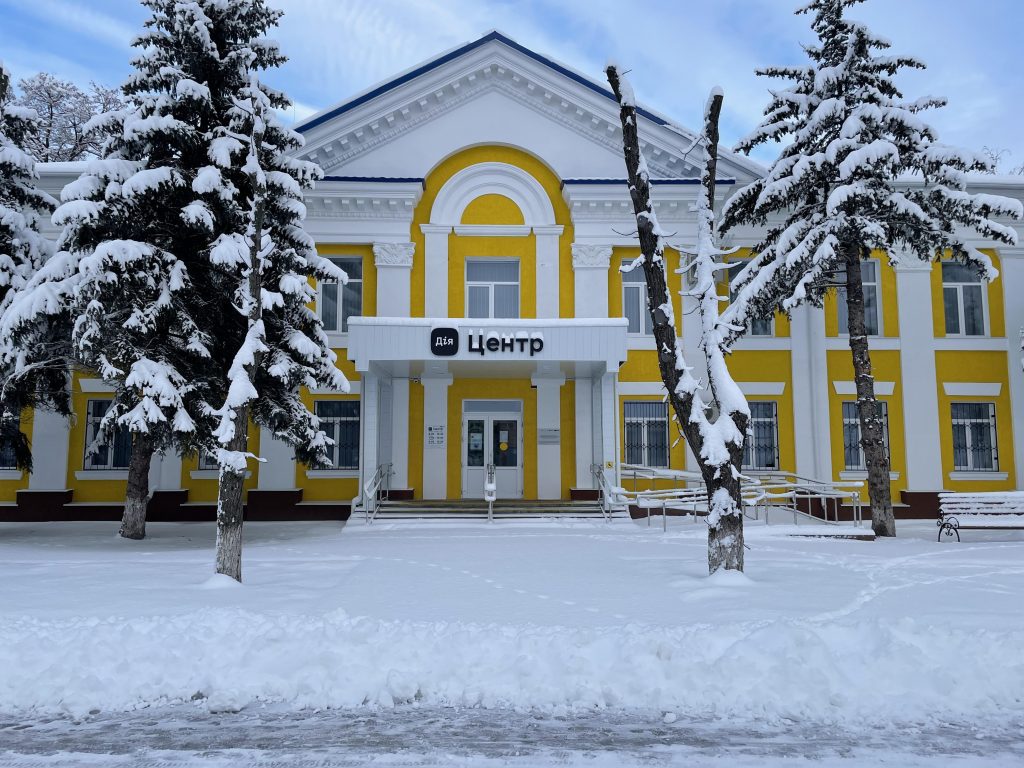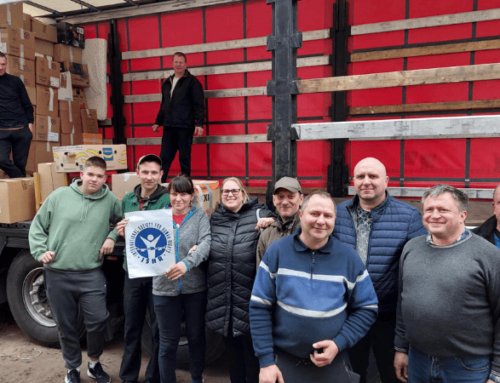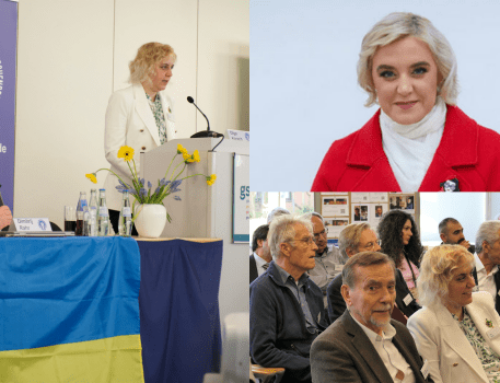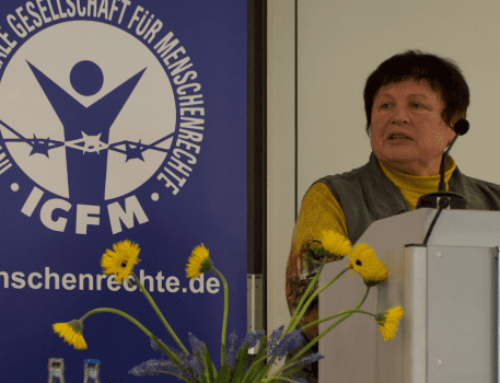
Christmas in Stanytsia Luhanska
Every time I come to Stanytsia Luhanska, I challenge myself. Because you never know what you can expect and what you can see. To be honest, arriving this time I expected to see not the most wonderful place on earth. As a rule, the infrastructure on the front lines is not so pleasing to the eye, and so one always fears that it might get worse. However, having arrived in Stanytsia Luhanska in January 2022, I was relieved to see that Stanytsia Luhanska had not only not gotten worse, but was instead developing step by step, even despite the growing military threat from the Russian Federation.
As always, I started my journey with a walk along Central Street. A year ago, in January 2021, I took a picture of the absolutely ruined administration building. And what was my surprise when in place of last year’s ruin I saw the newest restored building.


That’s how I found out that on November 16, 2021, a new administrative services centre, the Dia Centre, was opened at this place. This centre offers citizens up to 260 different administrative services. Half a million dollars was spent on the arrangement of this centre. The building has been renovated and equipped in the framework of the United Nations Programme for Recovery and Peacebuilding. Now it is a warm and cosy two-storey building where assistance is effectively provided to both residents of Stanytsia Luhanska community and residents of temporarily uncontrolled territories. So we are talking about 25,000 people. In the future, there are plans to extend the list of administrative services up to 400. Previously, people had to travel to different parts of Stanytsia Luhanska community, for instance to Shchastia or Novoaidar, to get a regular certificate. Now people can go to the new centre, which is located within walking distance from the Stanytsia Luhanska checkpoint.
Of course, there have also been changes at checkpoints this year. Thus, according to the State Border Guard Service of Ukraine, traffic has been completely blocked at five of the seven existing checkpoints on the Donbass borderline. Currently, two checkpoints – Stanytsia Luhanska in Luhansk Region and Novotroitske in Donetsk Region – are functioning. Stanytsia Luhanska operates seven days a week from 8 am to 4 pm. Passage of people has significantly decreased compared to last year due to the pandemic situation. Every week about 13,000 people cross the Stanytsia Luhanska checkpoint in both directions. In December 2021, there were around 55,000 crossings, which is about 17 per cent of total amount of people compared to December 2019.
Nevertheless, the Stanytsia Luhanska checkpoint is developing. For example, a permanent vaccination station against Coronavirus has been set up at the checkpoint. People can be vaccinated with vaccines such as Comirnaty (Pfizer) and CoronaVac. This station is opened seven days a week. A decree of the Cabinet of Ministers of Ukraine has also abolished self-isolation requirements for persons travelling from non-controlled areas into Ukrainian-controlled territory. Thus, citizens no longer need to undergo mandatory self-isolation and install the Vdoma mobile app, which makes life much easier for people crossing checkpoints, especially for pensioners.
The Novotroitske checkpoint does not work as smoothly as the Stanytsia Luhanska checkpoint. From January 24-29, only individual citizens were allowed to pass the checkpoint twice a week (on Monday and Friday). At this checkpoint it is also possible to be vaccinated against the Coronavirus. The vaccination station is opened on Mondays and Fridays. It is worth noting that although the checkpoint operates, not everyone can pass through. Those travelling to the temporarily occupied territory must apply in advance to the so-called “Interdepartmental Headquarters of the DPR”. Only those who have a residence registration in Ukrainian-controlled territory are allowed to leave the occupied territory.
And yet, all of the above shows that Stanytsia Luhanska is not dying. It may be difficult in today’s conditions, but it is developing. And there is always a place for hope and faith there. This is what Father Alexey, rector of St. Nicholas Сhurch, told me. With his support, the German Section of ISHR was able to organise and run a humanitarian project to help the residents of Stanytsia Luhanska, namely pensioners and large families.
I met Father Alexey a year ago on my first trip to Stanytsia Luhanska. He showed me the territory of St. Nicholas Church and told me about his parishioners. St. Nicholas Church is strikingly beautiful from the inside. However, every story has its pitfalls. In the colder seasons it is impossible to hold services in it, because the exorbitant gas prices do not allow to heat the church sufficiently. Thus, in late autumn and winter services are held in the so-called winter church, a small two-storey building on the territory of St. Nicholas Church.

St. Nicholas Church

Inside the winter church

Inside the winter church
That’s when the idea of providing humanitarian aid to elderly people and large families in Stanytsia Luhanska on the basis of St. Nicholas Church was born. In January 2022 we purchased the necessary medicines for pensioners and food packs for large families using funds raised by the ISHR sponsors. In total, our humanitarian help was provided to 39 pensioners and 9 large families.
Coincidentally, the humanitarian aid distribution took place the day before the celebration of Orthodox Christmas. Father Alexey called it none other than a Christmas miracle for the parishioners. I saw those people with my own eyes that day. They timidly came up for their medicine and sincerely thanked us for our help. “You know, many have given up on Donbass. But we are here! We live here, we exist. Please don’t forget about us”, said one elderly woman. How can you argue with that?

Distribution of medicines to pensioners

Distribution of food packs to large families
The next day, Father Alexey invited me and my family to a service for the feast of the birth of Christ. There were so many people gathered, it was an unforgettable atmosphere. At the end, all the parishioners sang a beautiful Ukrainian song about the birth of Christ. Indeed, in such touching moments of unity you believe that everything in this life is not in vain.
Today, when the whole world fears a new Russian invasion, it is especially important not to forget those who cannot defend themselves. What can an elderly man do against a man with a machine gun? Nothing. Our task is to make sure that world society does not forget that there is a place in Europe where thousands of elderly people are exposed to danger every day without even realising it. Yet at the same time, many of them continue to live guided by the phrase from the novel written by the great Leo Tolstoy: “We must live, we must love, we must believe”. And this is the most beautiful paradox of our time.








Leave A Comment